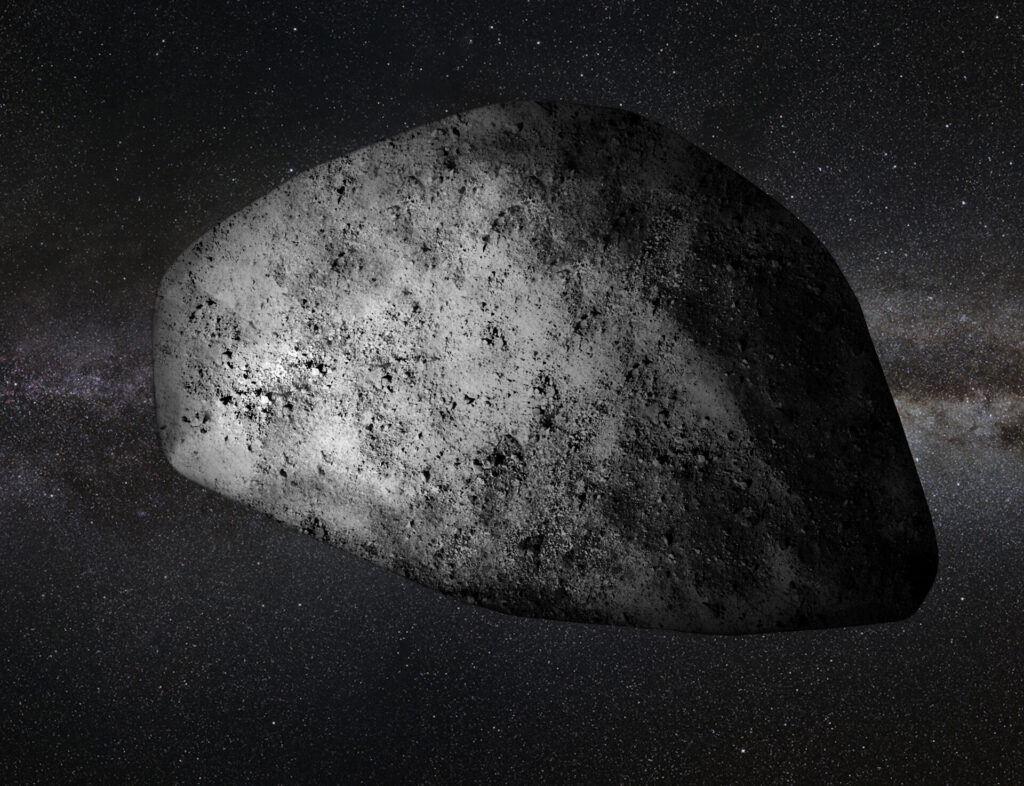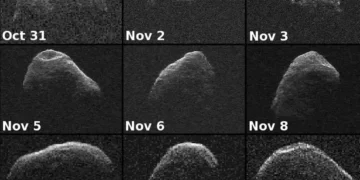Asteroid Apophis: The Close Flyby in 2029 That Could Change Our Approach to Planetary Defense
In 2029, a colossal space rock named Apophis will make a heart-stopping pass just 20,000 miles from Earth—closer than many satellites. This extraordinary celestial event, visible to millions without telescopes, promises to be a spectacle unlike any other. Once feared as a potential Earth destroyer, Apophis now holds the key to advancing our planetary defense systems. For NASA, ESA, and scientists around the world, this flyby is a rare chance to unlock new secrets about asteroids and sharpen our strategies for protecting Earth from future space threats. Here’s why the world is watching closely.
What Is Apophis?
Apophis, named after the Egyptian god of chaos and destruction, was discovered in 2004 and quickly made headlines due to initial concerns about its potential to collide with Earth. Measuring approximately 1,100 feet in diameter, Apophis is categorized as a near-Earth object (NEO), meaning its orbit brings it close to our planet. Early calculations suggested a small but alarming probability of an impact in 2029, sparking fears worldwide. Fortunately, after years of careful observation, scientists have ruled out the possibility of an impact for at least the next century. Despite this reassurance, Apophis remains a significant object of study due to its size, proximity, and potential future risks.

The 2029 flyby will bring Apophis closer to Earth than some of our satellites, providing a rare opportunity for scientists to observe an asteroid of this size at such close range. Its passage will offer valuable data not only about Apophis itself but also about the behavior of other asteroids that could pose a threat in the future.
The 2029 Flyby – What to Expect
On April 13, 2029, Apophis will make its closest approach to Earth, passing within 20,000 miles, a distance closer than many geostationary satellites orbiting the planet. This proximity will make the asteroid visible to the naked eye across much of the globe, particularly in Europe, Africa, and parts of Asia. For several hours, people on Earth will be able to watch Apophis streak across the sky without the need for any specialized equipment, a once-in-a-lifetime event for most stargazers.
Scientists are particularly excited about this flyby because it provides a unique opportunity to gather detailed observations of Apophis. NASA and ESA have already outlined plans to use radar, optical telescopes, and possibly even spacecraft to track Apophis’ trajectory, measure its physical properties, and study its surface in unprecedented detail.
Scientific Opportunities
One of the most important aspects of the Apophis flyby is the opportunity it provides for advancing planetary defense strategies. Asteroids like Apophis are considered “potentially hazardous objects” due to their size and proximity to Earth. While Apophis itself may not pose an immediate threat, its flyby allows space agencies to test and improve the systems in place for detecting, tracking, and potentially deflecting future asteroid threats.
NASA’s Planetary Defense Coordination Office and ESA’s Space Situational Awareness program are both heavily involved in these efforts. By closely monitoring Apophis during its flyby, these agencies hope to refine their techniques for predicting asteroid trajectories and develop better methods for preventing possible collisions. The data gathered from Apophis will also inform future missions, such as the Double Asteroid Redirection Test (DART), which aims to test the effectiveness of deflecting an asteroid by intentionally crashing a spacecraft into it.
Additionally, the 2029 flyby offers a rare chance to study the effects of Earth’s gravity on a near-Earth object. As Apophis passes so close to our planet, its trajectory will be slightly altered by Earth’s gravitational pull. Scientists will be watching closely to see how this gravitational interaction affects Apophis’ orbit, rotation, and surface features.
Planetary defense is an area of growing importance as more near-Earth objects are discovered each year. While the vast majority of these objects pose no immediate threat, the possibility of an impact remains a serious concern. Events like the Apophis flyby provide real-world scenarios for testing and refining the tools and techniques that could one day save the planet from a catastrophic collision. As NASA and ESA continue to develop strategies for detecting and deflecting potentially hazardous asteroids, the knowledge gained from Apophis will play a key role in shaping future efforts.
The Future of Apophis and Long-Term Monitoring
Although Apophis poses no threat in 2029, its future remains a subject of interest for astronomers and planetary defense experts. After its close encounter with Earth, Apophis’ orbit will be slightly altered, and scientists will continue to monitor it closely to ensure that it does not pose a risk in the coming centuries. Future observations will focus on refining our understanding of Apophis’ trajectory, with an eye toward predicting any possible future collisions.
Looking further ahead, Apophis will continue to make close approaches to Earth in the future, though none are expected to be as close as the 2029 flyby. Each of these encounters provides an opportunity for continued observation and study, helping scientists to track any changes in the asteroid’s orbit or behavior. Long-term monitoring of Apophis and other potentially hazardous objects will be critical for ensuring that we are prepared for any future threats.
The 2029 flyby of Apophis is a rare and exciting event that will captivate millions of people around the world. Beyond the spectacle of a large asteroid passing so close to Earth, this event holds significant scientific and strategic importance. For NASA, ESA, and other space agencies, the close encounter provides a unique opportunity to study Apophis up close, refine planetary defense techniques, and improve our understanding of near-Earth objects.
As we look ahead to 2029, the lessons learned from Apophis will help ensure that humanity is better prepared for future asteroid threats.
References
- NASA’s Planetary Defense Coordination Office Report on Apophis
- ESA’s Planetary Defense Strategies and Apophis Study Plans



















